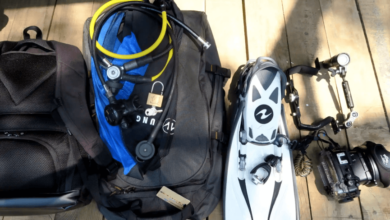Selecting the Right Utility Marking Paint for Different Ground Conditions

Accurate utility marking is a foundational step in construction, excavation, and infrastructure projects. The ability to clearly identify underground utilities helps prevent costly errors, service disruptions, and serious safety hazards. Choosing the right utility marking paint plays a critical role in ensuring those markings are visible, durable, and appropriate for the specific surface they’re applied to.
Different ground conditions, whether soil, gravel, concrete, or asphalt, require specific types of paint to deliver optimal performance. Selecting the right formula ensures that color codes are clear and that markings withstand weather, foot traffic, and worksite conditions.
Importance of Color Coding and Paint Selection
Utility marking follows a standardized color-coding system that represents various underground services such as water, gas, electric, telecommunications, and sewer lines. The choice of paint must align with this system and also be vibrant enough to remain distinguishable even in challenging site conditions.
Contractors working in varied environments need to understand utility marking colors and symbols to maintain accuracy. Selecting a paint that adheres well to the surface and resists premature fading is essential. Paints designed for soil may not perform well on concrete, and vice versa. For high-traffic areas, fast-drying, highly pigmented formulas are preferred, especially where markings must remain visible for extended periods.
See also: How Medical Weight Loss Programs Differ from Traditional Diets
Adaptability Across Ground Types
Ground conditions can vary drastically across a single job site. Loose soil, clay, gravel, and pavement all present unique challenges. Paint must bond to the surface without being absorbed or washed away. For instance, chalk-based paints may work on grass or turf, but oil-based or solvent-based options are often better for asphalt or concrete.
The formula should also be resistant to rain, UV exposure, and mechanical abrasion. Many professionals rely on inverted marking sprays designed for use with wand applicators, allowing quick application without compromising clarity. These versatile paints offer strong adhesion on uneven and porous surfaces, reducing the need for constant reapplication.
Field Applications and Safety Implications
In large-scale infrastructure or underground utility projects, clear markings ensure that contractors and equipment operators know where it’s safe to dig. Errors in marking can result in accidental utility strikes, leading to injury, legal consequences, and project delays.
The role of utility marking paint in underground infrastructure projects extends beyond visual guidance. These markings serve as communication tools among contractors, engineers, and inspectors. By selecting high-performance paints suited to the site’s conditions, crews can maintain efficient operations while upholding safety standards.
Conclusion
Utility marking is more than a compliance requirement, it’s a cornerstone of safety, coordination, and operational continuity. Using the appropriate utility marking paint for different ground types ensures visibility, adherence, and durability under real-world conditions. This allows field crews to work confidently and efficiently, knowing that underground hazards are clearly identified.
When professionals prioritize the correct paint selection, they not only prevent costly mistakes but also protect lives and infrastructure. Whether it’s a routine project or a large-scale excavation, choosing the right marking system supports clearer communication, fewer delays, and a safer work environment. As job sites grow in complexity, the quality and accuracy of utility markings will remain one of the most important safeguards in the field.





